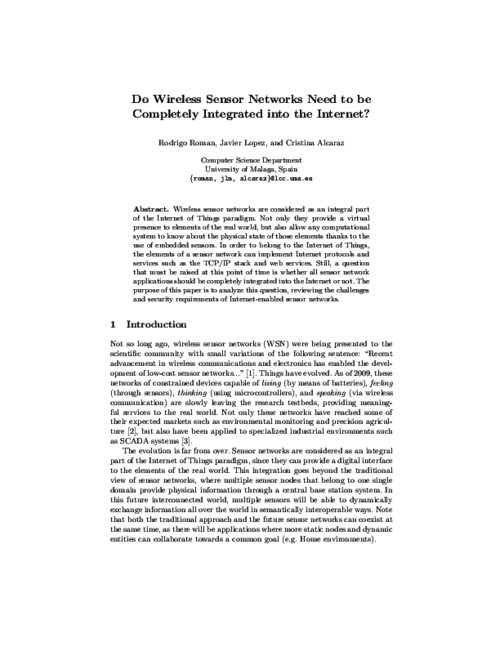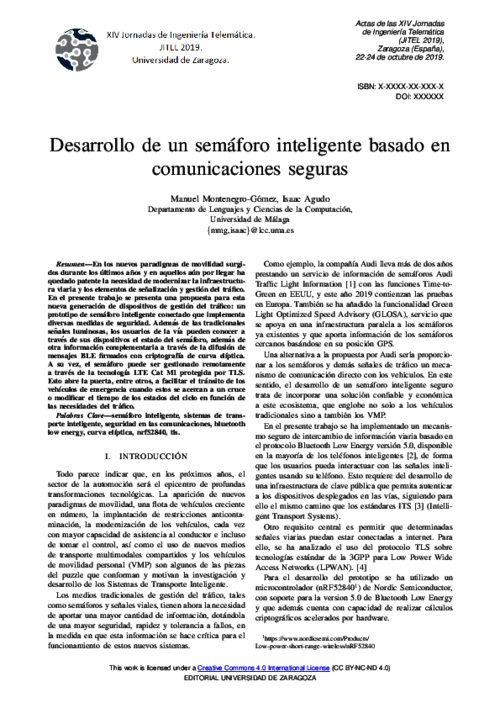3rd CompanionAble Workshop - Future Internet of People, Things and Services (IoPTS) eco-Systems, xxxx, pp. xxxx, December, 2009.
Abstract
Wireless sensor networks are considered as an integral part of the Internet of Things paradigm. Not only they provide a virtual presence to elements of the real world, but also allow any computationalsystem to know about the physical state of those elements thanks to the use of embedded sensors. In order to belong to the Internet of Things, the elements of a sensor network can implement Internet protocols and services such as the TCP/IP stack and web services. Still, a question that must be raised at this point of time is whether all sensor network applications should be completely integrated into the Internet or not. The purpose of this paper is to analyze this question, reviewing the challenges and security requirements of Internet-enabled sensor networks.

XIV Jornadas de Ingeniería Telemática (JITEL 2019), 10/2019.
Abstract
En los nuevos paradigmas de movilidad surgidos durante los últimos años y en aquellos aún por llegar ha quedado patente la necesidad de modernizar la infraestructura viaria y los elementos de señalización y gestión del tráfico. En el presente trabajo se presenta una propuesta para esta nueva generación de dispositivos de gestión del tráfico: un prototipo de semáforo inteligente conectado que implementa diversas medidas de seguridad. Además de las tradicionales señales luminosas, los usuarios de la vía pueden conocer a través de sus dispositivos el estado del semáforo, además de otra información complementaria a través de la difusión de mensajes BLE firmados con criptografía de curva elíptica. A su vez, el semáforo puede ser gestionado remotamente a través de la tecnología LTE Cat M1 protegida por TLS. Esto abre la puerta, entre otros, a facilitar el tránsito de los vehículos de emergencia cuando estos se acercan a un cruce o modificar el tiempo de los estados del ciclo en función de las necesidades del tráfico.

 ]
]